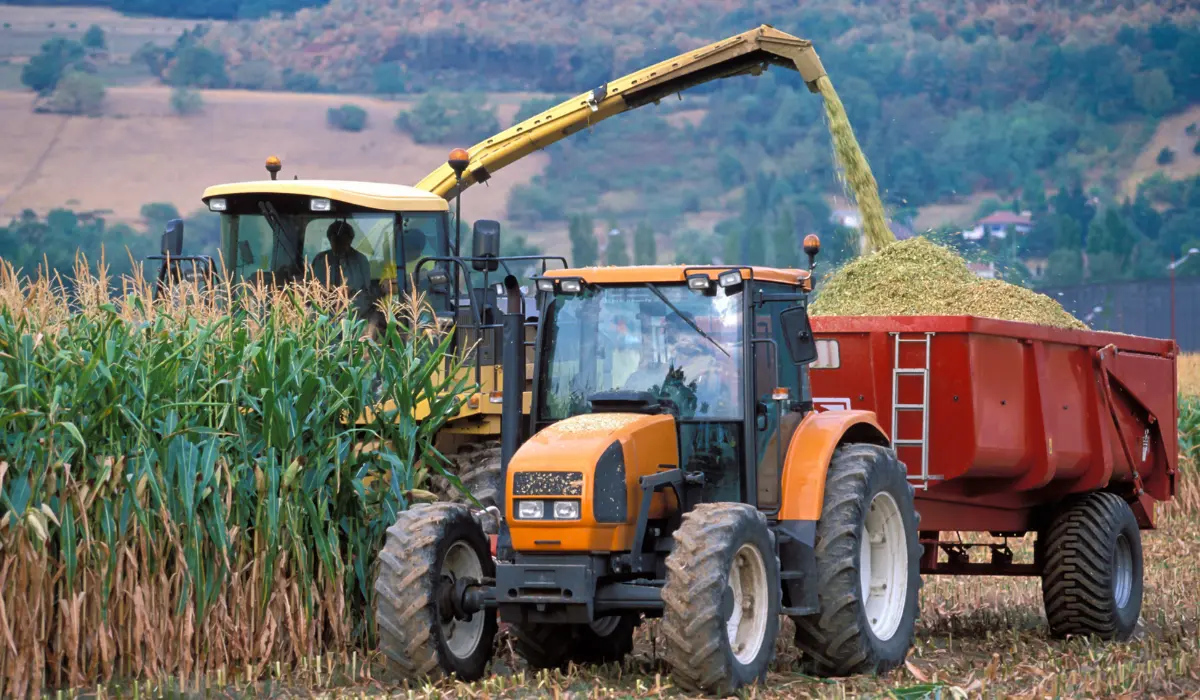The latest update from the U.S. Department of Agriculture (USDA) has delivered unwelcome news for corn producers across the country. The agency’s August forecast projects the average farmgate price for corn in the 2025/26 marketing year at $3.90 per bushel, a 30-cent decline from just one month earlier.
While the adjustment may appear modest on paper, the ripple effects across rural America are already being felt, pushing many farmers into more precarious financial territory.
Prices Slip as Surpluses Mount
Industry analysts say the price decline is less about international trade disputes and more about simple supply dynamics. Strong harvests in the U.S., coupled with abundant production from Brazil and Argentina, have created an oversupply that is pushing corn values downward. For farmers who were already navigating thin margins, the drop is another blow in a year filled with uncertainty.
“Corn is dropping because we have too much supply,” explained agricultural accountant Paul Neiffer. “The political narrative might blame tariffs or foreign policies, but the economics are clear, it’s oversupply that’s weighing on the market.”
Government Payments Provide a Safety Net With Delays
For growers facing tighter margins, one of the few cushions available comes in the form of government payments through programs such as Agriculture Risk Coverage (ARC) and Price Loss Coverage (PLC). Because these supports are tied to revenue and market conditions, declining commodity prices trigger larger payouts.
Neiffer estimates that next year’s payments could total around $15 billion, with corn growers likely receiving the largest share, followed by wheat and soybeans.
The catch, however, is timing. These funds would not reach farmers until October of 2026, long after they need cash to cover operating loans, rent, and input costs for the upcoming season. “Across the board, everybody’s going to get some payments if prices hold true,” Neiffer said. “But they won’t be immediate, and that lag creates real pressure on cash flow.”
There is also speculation that Washington could step in with more immediate relief, such as a Market Facilitation Payment. While Neiffer is skeptical that tariffs are the driving factor behind current market weakness, he acknowledged the possibility that politics could spur a short-term aid package: “It doesn’t mean they won’t say, ‘We’re going to give some money to farmers because we can.’”
Land Ownership: A Critical Buffer
The current downturn is sharpening the divide between farmers who own most of their land and those heavily reliant on rented acreage. Historical patterns suggest that renters are more vulnerable when profits tighten, as rental obligations eat into already narrow margins. During the downturn between 2014 and 2019, many tenant farmers bore the brunt of financial stress, while landowners were better positioned to withstand losses.
Recent data from the Federal Reserve Bank of Kansas City reinforces this view. A survey of agricultural lenders in the 10th District, covering major farming states such as Kansas, Nebraska, and parts of Missouri and Oklahoma, found that 60% of respondents reported stronger financial positions among owner-operators compared to renters. The gap highlights the challenges tenants face in building equity and leveraging farmland values as collateral when crop prices slump.
Credit Markets Tighten as Demand for Loans Rises
With profit opportunities shrinking, many producers are turning to banks to bridge the gap. According to the Federal Reserve’s second-quarter survey, loan demand is rising steadily as working capital erodes. However, lenders are scrutinizing applications more closely, and some borrowers may face difficult conversations about whether their operations remain sustainable.
Neiffer advises farmers preparing for these discussions to follow three principles: be upfront, share a clear plan, and stay realistic. In some cases, that may mean acknowledging when it’s time to scale back or even exit the business. “The worst thing that can happen is that you start with $2 million of equity, go through one bad cycle, and suddenly find yourself in bankruptcy,” he cautioned. “Sometimes it’s better to take the hit sooner rather than later.”
While the prospect of financial exits is grim, lenders stress the importance of transparency. A well-prepared borrower who demonstrates careful planning is more likely to secure flexible terms, even in a challenging environment.
Banking Sector Holds Steady for Now
Despite the pressure in crop farming, rural banks remain in relatively solid condition. Strength in the livestock sector, particularly cattle, has provided a counterbalance to declining crop revenues. Neiffer noted that as of now, most community and regional banks serving farm country are not signaling widespread distress. However, if grain prices remain depressed through next year, the financial stability of rural banks could be tested.
Adding a small measure of relief, a provision in the recently passed One Big Beautiful Bill Act allows banks to reduce the taxability of interest income, effectively lowering borrowing costs by about 20 to 25 basis points. While the impact may be modest, it could provide some breathing room for borrowers managing high operating loans.
Signs of Strain in Farm Finances
Despite isolated bright spots, the broader financial picture for U.S. row crop producers is deteriorating. The Kansas City Fed’s survey reported a continued decline in farm income and loan repayment rates through the second quarter of 2025, consistent with recent quarters. “Despite ongoing strength in the cattle sector, farm finances in the region have tightened considerably as profit opportunities for crop producers remained limited,” said economist Ty Kreitman.
These trends underscore the mounting stress across the Corn Belt and beyond. With the cost of production stubbornly high, driven by inputs such as fertilizer, seed, and fuel, farmers are squeezed between rising expenses and falling revenues.
A Road Ahead Marked by Uncertainty
Looking forward, the outlook for row crop producers will hinge on a mix of global supply dynamics, domestic policy decisions, and weather conditions. Another bumper harvest could keep prices depressed into 2026, while any supply disruptions in South America or changes in U.S. export demand might offer relief. For now, though, producers are bracing for a tough year ahead.
Farmers who maintain stronger equity positions and conservative debt loads are expected to weather the downturn more comfortably. Those carrying heavy rental obligations or stretched credit lines will face tougher challenges, particularly if cash support from the government remains delayed.
As the lending season approaches, many growers are preparing for frank discussions with bankers. Neiffer summed up the moment bluntly: “These are sometimes the conversations no one wants to have, but they are necessary to protect both the farmer’s long-term financial health and the bank’s balance sheet.”




